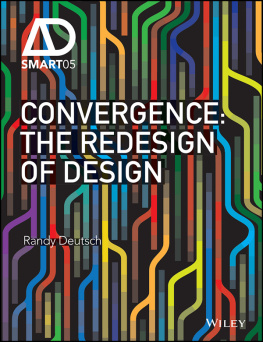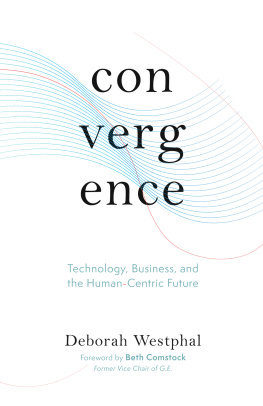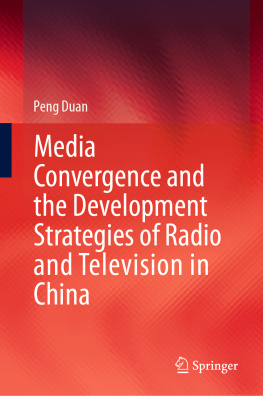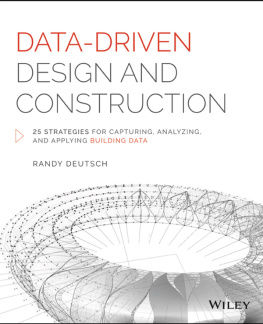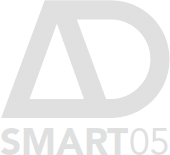
This edition first published 2017
Copyright 2017 John Wiley & Sons Ltd
Registered office
John Wiley & Sons Ltd, The Atrium, Southern Gate, Chichester, West Sussex, PO19 8SQ, United Kingdom
For details of our global editorial offices, for customer services and for information about how to apply for permission to reuse the copyright material in this book please see our website at www.wiley.com.
All rights reserved. No part of this publication may be reproduced, stored in a retrieval system, or transmitted, in any form or by any means, electronic, mechanical, photocopying, recording or otherwise, except as permitted by the UK Copyright, Designs and Patents Act 1988, without the prior permission of the publisher.
Wiley publishes in a variety of print and electronic formats and by print-on-demand. Some material included with standard print versions of this book may not be included in e-books or in print-on-demand. If this book refers to media such as a CD or DVD that is not included in the version you purchased, you may download this material at http://booksupport.wiley.com. For more information about Wiley products, visit www.wiley.com.
Designations used by companies to distinguish their products are often claimed as trademarks. All brand names and product names used in this book are trade names, service marks, trademarks or registered trademarks of their respective owners. The publisher is not associated with any product or vendor mentioned in this book.
Limit of Liability/Disclaimer of Warranty: while the publisher and author have used their best efforts in preparing this book, they make no representations or warranties with the respect to the accuracy or completeness of the contents of this book and specifically disclaim any implied warranties of merchantability or fitness for a particular purpose. It is sold on the understanding that the publisher is not engaged in rendering professional services and neither the publisher nor the author shall be liable for damages arising herefrom. If professional advice or other expert assistance is required, the services of a competent professional should be sought.
A catalogue record for this book is available from the British Library.
ISBN 978-1-119-25621-2 (hardback)
ISBN 978-1-119-25623-6 (ePDF)
ISBN 978-1-119-25628-1 (ePub)
ISBN 978-1-119-25626-7 (O-BK)
Executive Commissioning Editor: Helen Castle
Project Editor: Miriam Murphy
Assistant Editor: Calver Lezama
Page design by Emily Chicken
Cover image by Aaron Laniosz
Cover design and page layouts by Karen Willcox, www.karenwillcox.com
CONVERGENCE: THE REDESIGN OF DESIGN

DEDICATION
To my daughter, Michol:
May your curiosity, multivarious interests and passion for learning converge into a fulfilling lifetime of selfexpression, service, and exploration.
ACKNOWLEDGEMENTS
We often think of reading and writing as a solitary acts, but they can also be common acts of convergence. Salman Rushdie once explained, a different kind of identity is produced as reader and writer merge, through the medium of the text, to become a collective being that both writes as it reads and reads as it writes. For Rushdie, this is the greatest and most subversive gift offered by a book.
I would like to thank my team at Wiley for the opportunity to write for AD, and for their guidance, support, and encouragement throughout the writing of this book. Special thanks to Amanda Miller, vice president and publisher; Dr. Paul Sayer, publisher; Miriam Murphy, project editor; Amy Odum, senior production editor; Justin Mayhew, associate marketing director; and Calver Lezama, who has now worked with me on several books.
A hearty thank you to Helen Castle for recognizing the promise of the book from the very beginning and for helping to shepherd the initial idea for the book into its present state.
Also special thanks to my contributors Brian Ringley, Nathan Miller, Toru Hasegawa, Robert Yori, Robert Vierlinger, Sam Miller, Anthony Buckley-Thorp, the folks at PARTISANS, Philip Beesley, Markku Allison, Yun Kyu Yi, Mani Golparvar Fard, Jamie Farrell, Nels Long, M A Greenstein, Jose Sanchez, Carin Whitney, and Matthew Krissel for their generosity of time, and sharing of their experience and insights.
Lastly, my thanks to Aaron Lanoisz, who not only rendered the expert, colorful diagrams throughout the book, but also provided the inspiration for the cover. Aaron proved to be a gifted, trusted and creative collaborator and always-reliable sounding board throughout the writing of the book, and for thatand his wisdom and patienceI am grateful. I am confident that he is on his way to become a leading architect.
ENDNOTES
Les Back,
Academic Diary, MIT Press, Cambridge MA, 2016, p. 123.
INTRODUCTION
DESIGN IN A TIME OF SIMULTANEITY, SUPERINTEGRATION, AND CONVERGENCE
This convergence will be recognized as the largest, most complex, and most surprising event on the planet up until this time.
Kevin Kelly
There is today a pronounced and accelerated convergence in architecture. This convergence is occurring in building design, fabrication, and construction because of doers, not thinkers, and in practice, not academia. It is about solution-centric individuals engaging in real-time problem solving, not in abstractions. The nature of this convergence, where things are converging, and what that convergence means for architecture is the subject of this book.
The emergent forces and technologies that have come together in the second decade of the twenty-first century have developed to the point where real-time integration of all facets of the design and construction process is now possible. Computational tools, collaborative work processes, and the cloud make real-time/right-time convergence today a reality. However, tools arent the only things causing this convergence: its also due to the maturity of the design community. Those who have been at this for a while, as they attest throughout this book, recognize a convergence of forces, technologies, and workflows not only in their own work, but throughout the profession and industry.
There is even another force at work: millennials. No longer restricted to use of the tools created and distributed by software manufacturers, and impatient with the old guard, standard procedures, business as usual, and the status quo, young and emerging professionals are driving this movement toward convergence by taking matters into their own hands via employee-created and freely disseminated software plug-ins and add-ons, along with user-empowered scripting and visual programming, thereby improving workflows and increasing efficiencies.
CONVERGENCE DEFINED
Design professionals today recognize that technology and work processes are converging in their area of practice or expertise. Convergence refers to two or more things coming together, joining together, or evolving into one. It is manifested in such things as building information modeling (BIM) and computation; gaming and spatial analysis that join in virtual reality; design optimization and fabrication; and reality capture co-joining in photogrammetry, visual sensing laser scanning, drones, and robotics. What design professionals dont realize is that these convergences are taking place in all facets of the design professions and construction industry. Moreover, they dont have a thorough understanding of how the pieces fit together, what the potential impacts are, ormost importantly for their practiceswhere all of this is heading. The convergence referred to in the book title has both practical and emergent antecedents. Architecture is a complex undertaking requiring the input of many individuals with varying interests, backgrounds, and expertise. This has not changedand will not change. What
Next page
